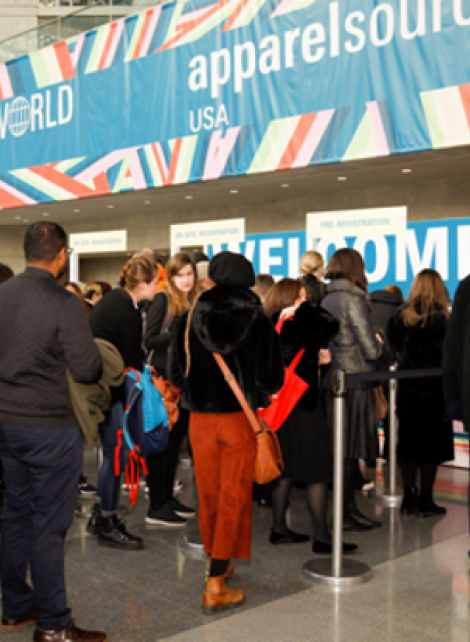Have you ever thought about what your clothes are made of or where your clothes came from? Where do all your donated clothes end up? Or do you just throw your clothes away and never think about them again? Perhaps you thought nothing because ‘out of sight out of mind’? Well, if only it was that way.
On January 23, 2019, my Sustainability and Future of Fashion class at LIM College went to a textiles event, “Texworld– Winter Edition,” at the Jacob Javits Center in New York City’s Hudson Yards. I had never been to a textile trade show before, and it was a great experience.
Before visiting Texworld, I thought to myself, “How fun could it really be looking at a bunch of sustainable textiles?” When I thought of the word “sustainable,” it made me think of dull, boring, and plain fabrics. Thinking about that now, it makes me mad how unaware I was, and perhaps that is how many other people are when it comes to this topic. There were so many jaw-dropping fabrics and elaborate designs, I could only imagine how the textiles will look when they are finally cut and sewn into clothes.
The product categories included shirting, knits, silk, prints, cotton, linen, yarn, wool, jacquard, findings, trims, accessories, functional fabrics, denim, novelties, faux fur, and prints. They had textiles from all over the world, some including from Turkey, Mauritius, Korea, Taiwan, Lenzing, Sri Lanka, Nepal, and even a large amount based here in the United States.
The floor had thousands of textiles exhibited, and many vendors said they had even more textiles available in their warehouse. Seeing all those sustainable fabrics shocked me as to why we are not using these fabrics more often.
I was introduced to the idea of sustainability when learning about Earth’s resources and energy in science class way back in elementary school. However, I have since learned that fast fashion can have negative effects on people, the environment, and even the economy. Did you know the fashion industry is one of the top users of water? That water is no longer healthy for human consumption even after filtration.
Yes, we want all the pretty clothes and we want it now, so we shop at retailers such as Zara, H&M, ASOS, and Fashion Nova, but the truth about the fashion industry is ugly. Most clothes that are not used from the donations end up in landfills. In fact only 10 percent of clothes get donated, according to The Green Hub. The commonly used donated items for the homeless are coats, hats, gloves, socks, and office wear (Dress for Success). Most materials are non-biodegradable, and many harmful and even poisonous chemicals are emitted during the manufacturing process.
At Texworld 2019, some of the vendors I viewed were Icato MoonYao Clothing Factory for children’s wear, Ningbo Seduno Group, and Splendor. Tencel also had a great visual explanation of how wood chips turn into pulp, then into fiber, yarn, and finally into fabric. Calvin Klein and DKNY even purchase from Tencil because their textiles are soft and high in quality. Erteks Grup Tekstils had my favorite textiles. Even the textiles simply hanging alone were beautiful. How to describe it? It was what your dream wedding dress would be made of.
Sustainability in fashion needs to be established so we can look forward to a bright, healthy future. Yes, many sustainable fabrics do cost a little more, but is the price really worth jeopardizing the future? Time is ticking.




